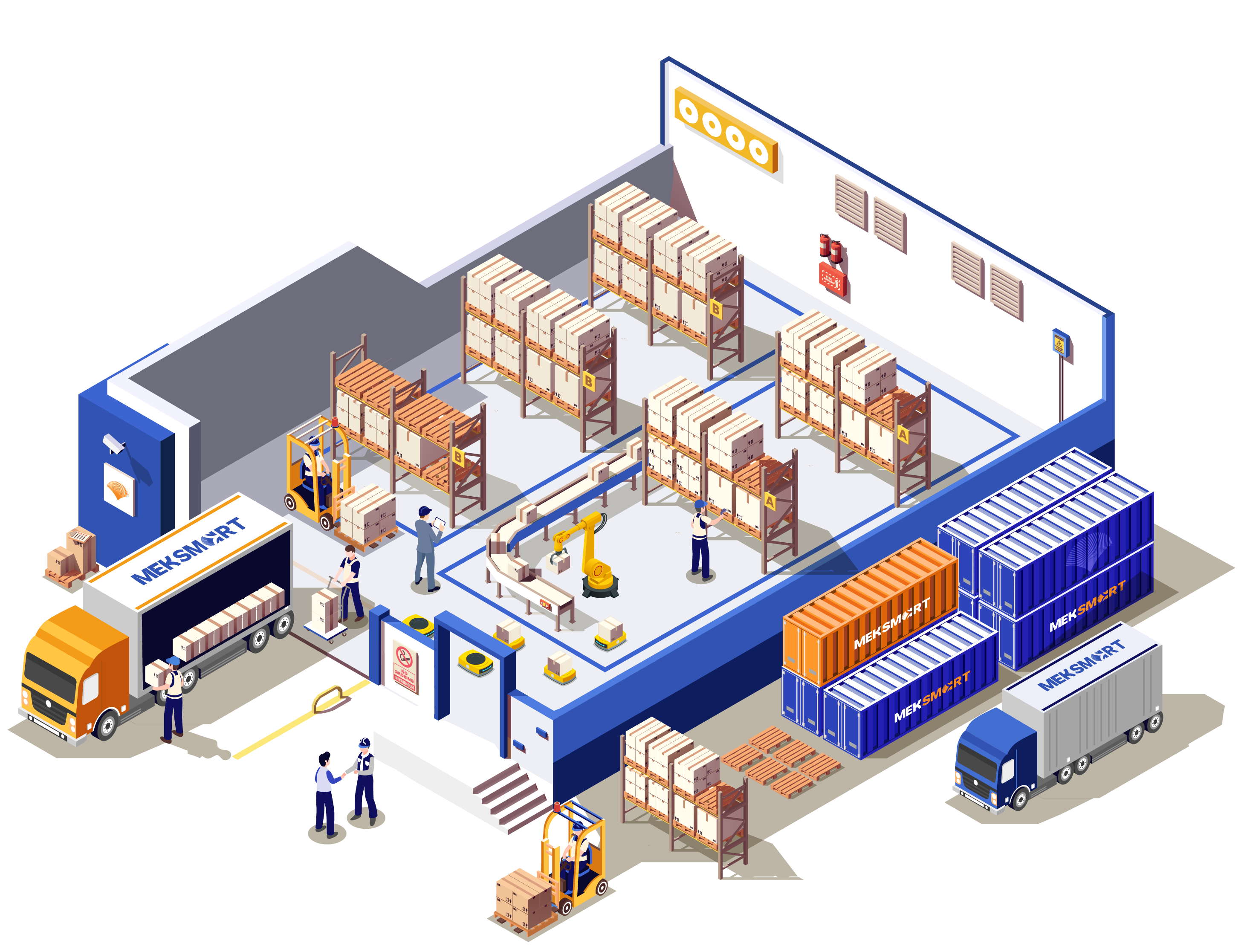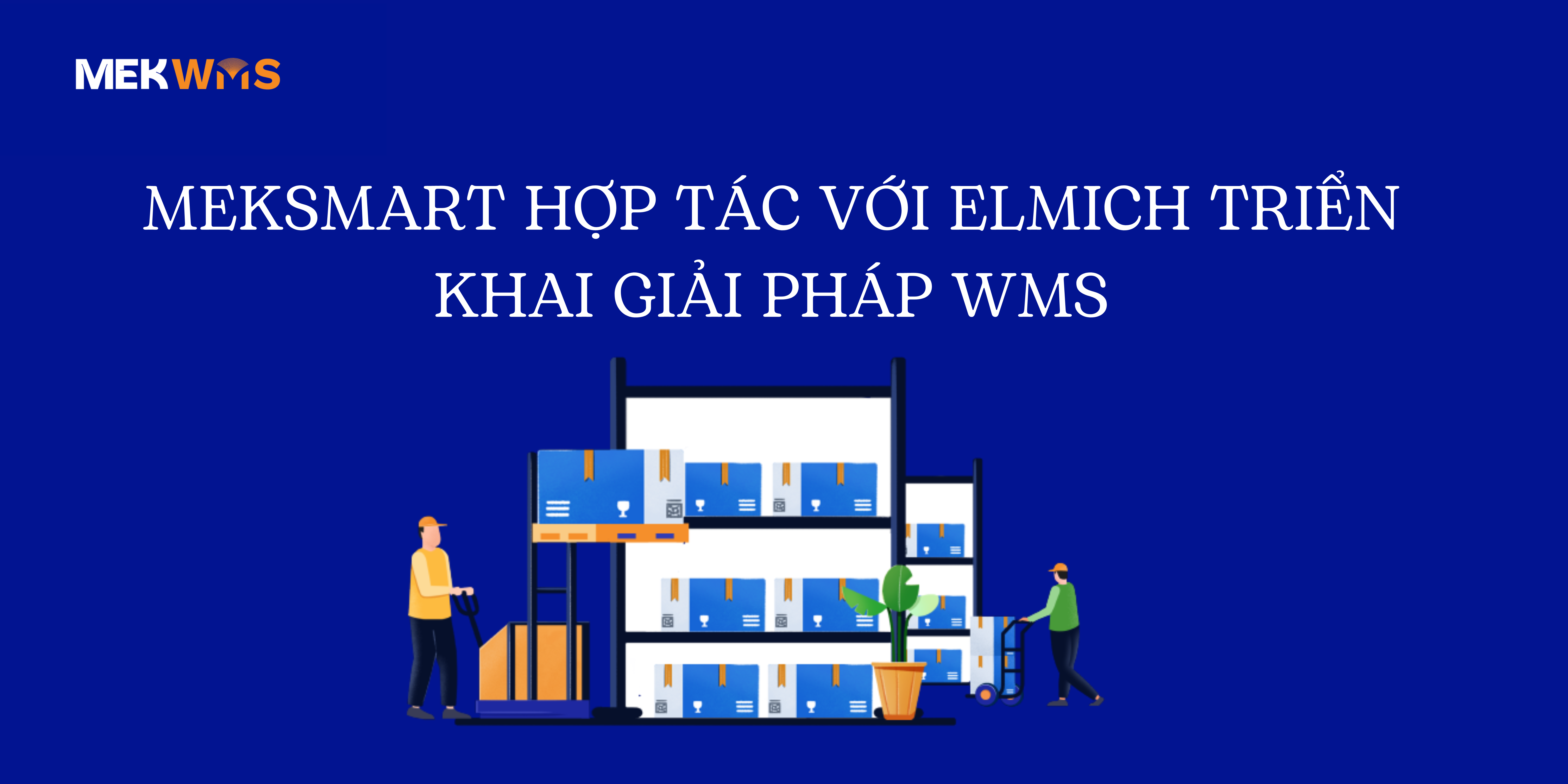MEKSMART
GENERAL NEWS
Author:
Update: 30/11/2022
EFFICIENT INVENTORY MANAGEMENT IN THE SUPPLY CHAIN
Is an important function in the Supply Chain of any business. The inventory management process must work closely with the entire chain.
1. What is inventory
Inventory is the amount of goods kept in the warehouse. Includes finished products (finished goods) and unfinished goods (In progress - components, components, raw materials, pre-processed materials and sub-assemblies). However, actual inventory is complex and has a huge impact on the performance of the entire supply chain. Therefore, businesses need an effective Inventory Management plan.
Inventory management is the process of planning, strategizing, and controlling inventory.
2.Inventory Management What is the optimal balance?
High inventory levels lead to increased costs (cost of stock). However, low inventory can cause business damage. When supply does not meet demand, the company loses revenue and customers (delivery costs). To solve the above complexity, the Inventory Manager must ask himself the following simple but extremely important questions:
What is in stock? When? And how much is in stock?
2.1. What products need to be stocked?
Storage costs are very expensive. According to the Vietnam Logistics Report 2020, inventory costs and management costs (including storage, yard, loading and unloading, and packaging) account for 40% of Logistics costs. Therefore, inventory control is necessary to ensure the lowest possible inventory level. Businesses need:
- Calculate inventory for items in groups A, B, and C (with information about ABC classification)
- Items that are no longer usable must be removed from the inventory
2.2. When should an order be placed?
There are 3 different approaches to this question.
- First: based on a periodical evaluation system. Under this system, businesses place orders at regular intervals.
- Second: businesses rely on a fixed order quantity system.
- Third: the system gets specific data on the quantity demanded. Order an amount equal to that quantity demanded.
Regardless of the system used, the question of when to order depends heavily on the following factors:
- Details of the inventory control system used
- Classification of goods (raw materials, finished products, semi-finished products, ...)
- Classification of needs (high or low, frequent or arising, exact or estimated)
- Value of goods and storage costs
- Ordering cost
- Time to receive goods from the time of ordering
- Vendor (location, reliability, ...)
- Other potential factors
2.3. How much to order?
A single order is always associated with many additional costs such as administrative fees, shipping, capital costs, etc. If the inventory is large and not ordered frequently, ordering and shipping costs will be low, but inventory levels and average inventory values will be high. In contrast, if the business orders small quantities frequently, administrative and transportation costs are high, but inventory levels and inventory values are low.
There are many methods used to determine order quantity. In, ABC Analysis and Economic Order Quantity are two common methods to determine the optimal order quantity for businesses. Accordingly, the reasonable order quantity should be based on:
- Demand chart
- Price & discount
- Delivery cost for orders
- Cost of goods storage
- Cost of goods shortage
- Successful delivery rate
3. Inventory cost
Inventory Management is a link in Supply Chain management. Therefore, effective inventory management must achieve the goal of optimizing the whole chain operation. That means inventory must be maintained at a reasonable level, to both meet customer service commitments and keep inventory costs at a minimum. Therefore, managers need to consider total costs to make the right decision about inventory levels for each specific case
Inventory costs include all costs associated with storing goods (raw materials, semi-finished products, and finished goods). In Vietnam, inventory costs include warehousing and storage costs: 11%, loading and unloading: 21% and packaging: 8% (According to Vietnam Logistics 2020 report).
Furthermore, in the order fulfillment process, taxes, insurance, waste, labor costs, storage space, and opportunity costs are participation costs that tend to increase/decrease in proportion to inventory levels. of the enterprise. Therefore, the cost of inventory is a huge number that every company must control wisely.
Inventory costs are recorded as a percentage (percentage). It is understood as a percentage of the total value of a business's inventory at a point in time. Assuming current inventory value is $1 and inventory cost is 42%, that means the business spends 42 cents to maintain $1 worth of inventory.
4. Factors affecting inventory cost
Every decision in the Supply Chain has an effect on the Cost of Inventory, more specifically on the size of the inventory. Therefore, all related functions must be connected for effective inventory management.
The larger the inventory, the higher the inventory cost. When a company purchases, produces, or ships a larger quantity of goods or materials, average inventory levels will increase by the following formula:
Average inventory level (week) = Economic Order Quantity (EOQ) / 2
An increase in inventory levels leads to a proportional change in inventory costs. Therefore, inventory managers need to be aware of the factors that affect the rise and fall of inventory levels.
4.1. Scale of new product lines
Developing and producing more product lines is a useful strategy that businesses use to increase market share. However, when adding a new product line to the product list, enterprises should pay attention to separate the inventory of new products from the safety inventory level in inventory management.
Therefore, increasing the product line will increase the size of the average inventory level. To optimize costs but still retain customers, ECR is applied with the goal of reducing the number of SKUs without affecting customer choice.
ERC focuses on exploiting inventory turnover and customer preferences. From there, help businesses achieve their goals by relying on purchase data to make cutting decisions.
4.2. Number of inventory-holding positions
The more places where inventory is stored, the larger the average inventory level. This conclusion is based on the "square root law" as follows:
Average total inventory at n locations = average inventory at 1 location * square root of n
Consider reducing inventory locations carefully for more efficient inventory management. Because reducing inventory positions can bring a company cost reduction results. However, that significantly affects customer service and shipping costs.
4.3. Shipping costs
At the stage of transportation, businesses need to consider the nature of the product. Products of little value are often stored and transported in bulk. Universal shipping method with long transit time. That helps businesses save shipping costs.
Although the above method increases inventory costs, it is still a reasonable choice. Since transportation costs (accounting for 60% of logistics costs in Vietnam) are often much larger than inventory costs, this trade-off is a strategy to reduce total costs for the entire Supply Chain.
4.4. Customer Service Philosophy
Customers are getting more and more demanding. Demand for excellent product quality and attentive service is on the rise. Recognizing this trend, companies are constantly competing by improving delivery times and taking action to ensure that out-of-stock never happens.
Enterprises tend to pursue the business philosophy: of "customer-centered". Therefore, businesses must keep inventories at a high level to ensure that goods are always ready for buyers. That makes inventory costs a huge number.
4.5. Inventory Location
The value of inventory plays a large part in determining the cost of inventory. For a manufacturing business, if inventory is stored in a location where the value of the inventory is lowest, the company will save money and reduce capital investment.
For retail businesses, the cost will be higher. However, the retail location has the advantage of easy access to customers. That will help businesses increase customer service. Therefore, the value of the product at the retail level is the cost that the retailer has to pay. That cost includes loading and unloading fees and shipping charges. This means that retailers have to spend more capital and incur higher inventory costs than manufacturers.
4.6. Forward Purchases and Discounts
Purchase discounts create an economically viable opportunity to help businesses expand their Inventory. As a result, companies can take advantage of term purchases to receive discounts.
In short, effective inventory management depends heavily on the decisions and control processes of the business. Besides, it also depends on the balance between inventory costs and costs to pay when out of stock. It is the inseparably connected nature of the Supply Chain that proper management must follow the overall strategy of the entire chain.
Source: vilas.edu.vn







